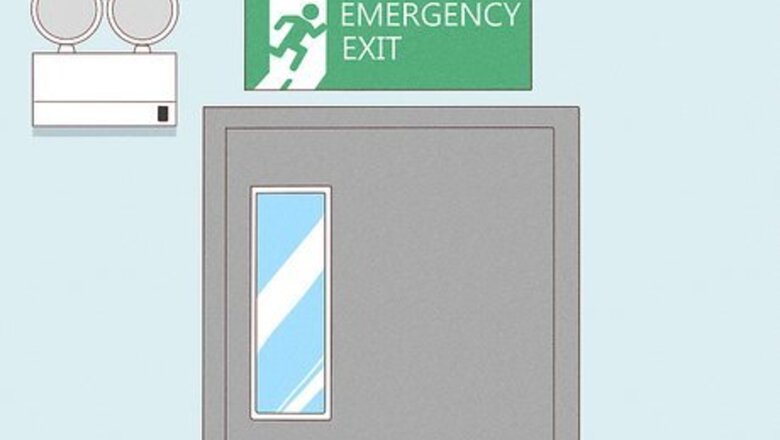
views
- Escape a structure fire by going to the closest exit. Feel doors with the back of your hands to see if they’re cool enough to open, and stay low to the ground to avoid smoke inhalation.
- In a forest fire, move downhill and upwind from the blaze and look for an area with a natural firebreak or trench.
- Call 911 or emergency services as soon as you’re safe so firefighters can be dispatched to your location.
Escaping a Structure Fire
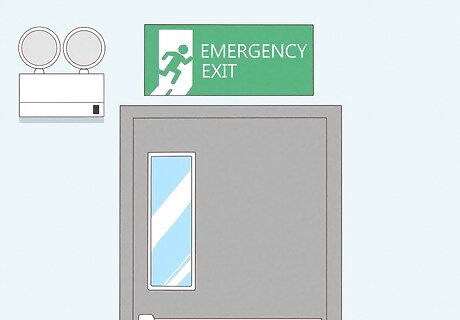
Head to the nearest exit. If you’re at home, an exit could be a door, window, or even a fire escape ladder. If you’re in a public building, locate the nearest emergency exit, designated with an EXIT sign, a picture of a running man in a doorway, or both. If smoke is present, stay low. If you are unable to escape, proceed back into your room.
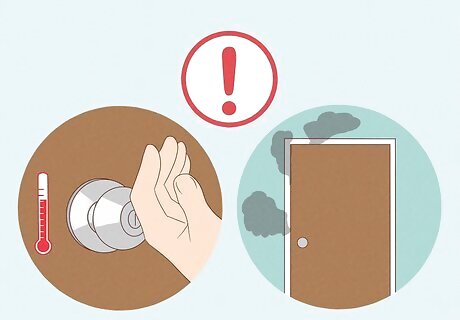
Check the door for any signs of fire on the other side. First, feel the door and doorknob with the back of your hand. If it feels warm or hot, don't open it. Then, check around the door for signs of smoke or heat. If you see glowing embers or black smoke through the door, you also should not open it. Use an alternate escape method to leave the building, but don’t use an elevator—these are unreliable and can malfunction during a fire, leaving you trapped.

Open the door slowly. Only open it far enough that you can see what is on the other side of the door. If you observe heavy smoke or flame, close the door and remain where you are.

Make sure your door remains closed but unlocked upon exit. This will help reduce the spread of fire to your room if the fire manages to reach there, as well as ensure that any fire that might be in your room does not escape and create a dangerous situation for evacuees. Doors do an effective job at stopping fire, which is why the NFPA and numerous fire departments recommend closing your bedroom door before you go to sleep.
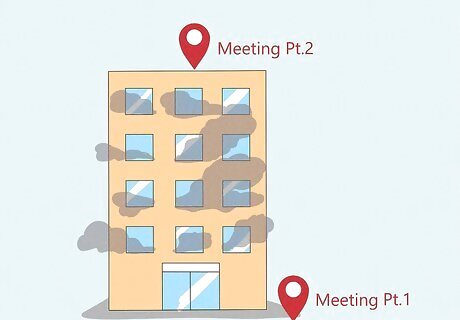
Proceed down to your meeting point. Your meeting point is either outside, on the ground floor, on a sky lobby floor, or in some other location that is easy to reach during an emergency. If you are unable to reach your main meeting point, then proceed to an alternate meeting point.
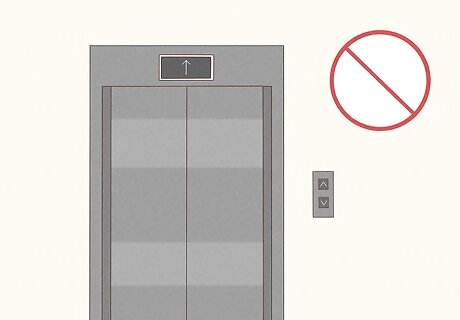
Do not use the elevator. Elevators can easily malfunction in a fire, and you could get trapped if you decide to use it as your escape. Use the stairs to make your escape if you’re on the higher floor of the building, or wait for firefighters to assist you. Firefighters can operate the elevators manually with a special key.
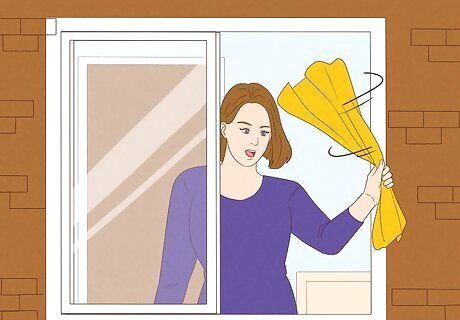
Secure yourself and get a firefighter’s attention if you can’t escape. Seal the doors and any window vents with wet towels or sheets if you’re unable to evacuate or are ordered to stay in place. Then, focus on getting the attention of firefighters by opening a window and waving something colorful or bright. This might be the best option if you’re on the higher floor of a building. Climb from a window, patio, or balcony only if it is safe to do so.
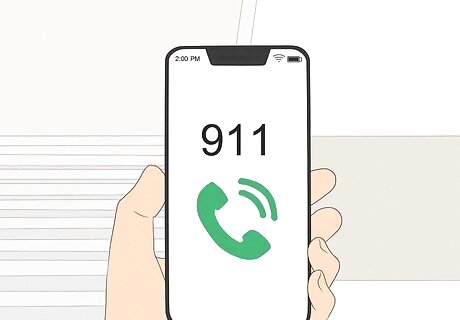
Report the emergency once you’re in a safe location. If you live in the United States, call 911 to be connected with emergency services, who can dispatch the fire department to your location. Speak as calmly and clearly as you can as you describe exactly where the fire is happening. Follow the dispatcher’s instructions if they provide any. Click here for a list of international numbers to dial during a fire emergency.
Escaping from a Wildfire

Move downhill and upwind. Hot masses of air that rise cause wildfires to travel uphill, and walking uphill will slow you down anyway. Move in the direction the wind is coming from, and locate this direction by looking to see where smoke is blowing. Try to look high in the sky for the direction of the smoke’s travel. Look for the direction in which leaves and branches are swaying.
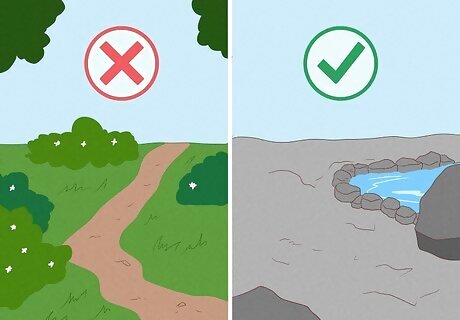
Search for an area without combustible material. Once you’ve set your direction for downhill and upwind travel, look for a natural firebreak. (A firebreak is an area that has comparatively less material for the fire to consume, like a rocky area or field of boulders, road, body of water, or patch of large trees that might retain more moisture than other nearby foliage.) Steer clear of open areas with small, dry shrubs or bushes.
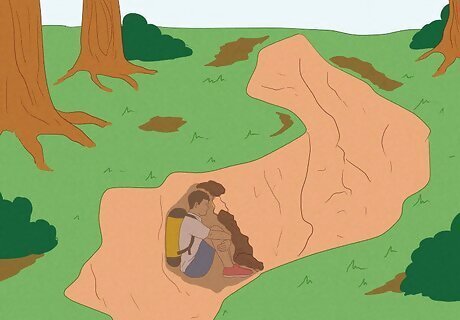
Find or dig a trench if escape is not possible. If you cannot escape to a safer location, look for a trench or gully to help you survive the wildfire. If you find such an enclosure, try to quickly dig it out to create a space deep enough for you to fit your body. Crawl in, preferably with your feet facing the direction of the fire, and cover yourself with dirt. Make sure you can breathe as you take cover. If a wildfire is within close range, surrounding you, or otherwise blocking all means of downhill and upwind escape (and if no safe locations are available), you might have to resort to running through the fire’s leading edge into an area that’s already burned.
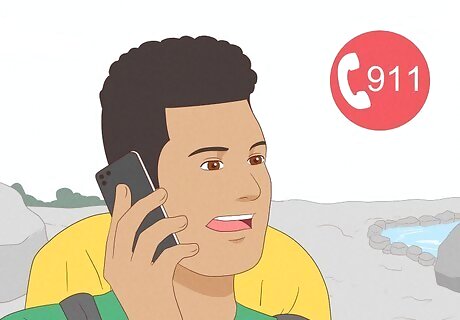
Call emergency services as soon as you’re in a safe location. Give the dispatcher your name and contact information, and describe where the fire is (and where it’s headed). Provide as much information as you can, including the smoke’s color, the terrain the fire is covering, if it’s near a fuel source, and so on. Never assume that the fire is already reported. It’s better to be on the safe side!
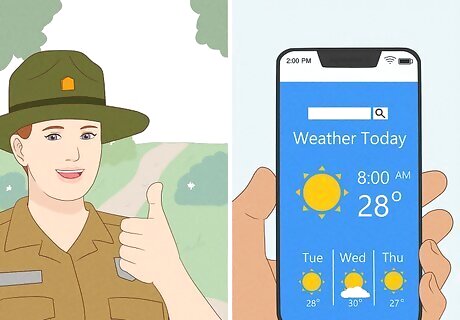
Practice safe hiking and camping practices. Prevent getting stuck in a wildfire before hiking or camping by assessing risks like weather conditions, extreme drought, any buildup of dry materials in your hiking or camping area, and the wind’s direction. Check with local park rangers if there is any threat of wildfire in your area. Don’t build a campfire in dry conditions, especially if your park ranger lets you know there’s a local burn ban. If it’s safe to build a campfire, keep it small, contained, and away from trees or shrubs. Never leave it unattended. Make sure your campfire is completely extinguished before you leave by pouring a lot of water over it, stirring the ashes, pouring more water, making sure there’s no hissing sound, and making sure it’s cool to the touch.
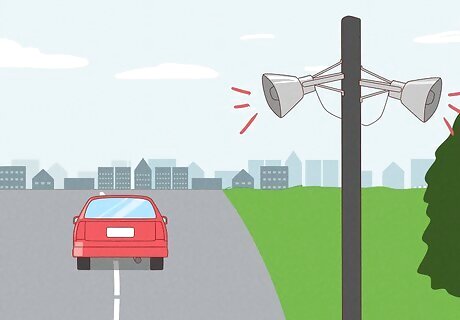
Evacuate as soon as you’re ordered to if a wildfire is close. Grab bare essentials as quickly as possible and leave immediately if you’re under a wildfire evacuation order. If you live in an area threatened by wildfires, contact your local fire department’s non-emergency line or search the internet to find out about any available email or text message alert systems.
Fire Safety & Prevention Tips

Establish a fire escape plan for future home emergencies. Highlight the different exit points around your home, and make sure that everyone in your household can list at least 2 possible escape routes in the event of a fire. At least twice a year, practice “escaping” from your home and meeting at an established place out front. Make sure that younger household members know what a smoke alarm sounds like.
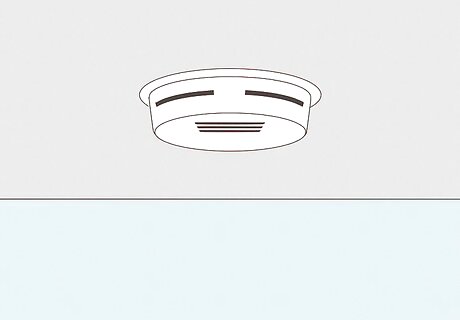
Install and regularly inspect your smoke alarms. Make sure that your home has smoke alarms installed around your home—a good rule of thumb is to have at least one on each floor as well as in each bedroom/sleeping space. Inspect the alarms each month to make sure that they’re working, and replace the batteries annually. Carbon monoxide detectors can also be a life-saving addition to your home, as carbon monoxide is a lethal gas (produced by fire) that doesn’t have a distinct scent.
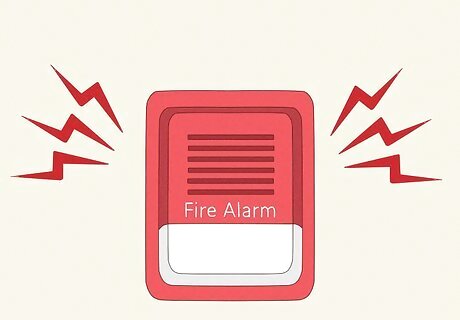
Recognize the sound of your building’s fire alarm. In much of North America and East Asia, smoke and fire alarms will perform three blasts, whoops, chimes, or beeps, followed by a brief pause, and then repeat.
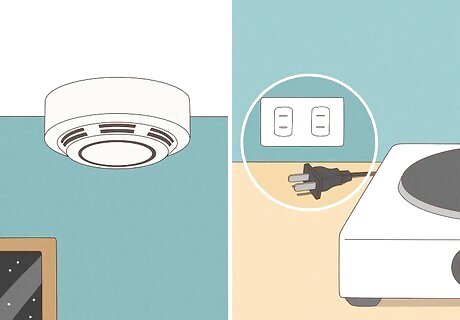
Practice safety-conscious habits around your building. If you’re at home, make sure that you have properly functioning smoke detectors and that you develop life-saving habits like being alert and focused while using the stove or disconnecting appliances with heating elements that could start a fire. If you’re at work or school, make sure that your building is up to the fire code. If you suspect violations in your workplace or your apartment, contact your city's fire inspector.
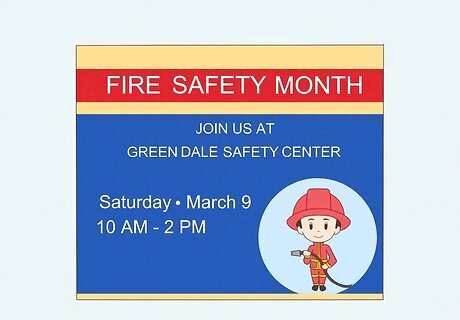
Participate in fire drills as mandated by the building’s code. Fire drills are practiced at workplaces, schools, and universities, multiple times a year, to ensure that everyone knows what to do in the event of an emergency. In numerous states, public and private schools are required to conduct monthly fire drills, and other structures are required to conduct quarterly fire drills. These can save lives.
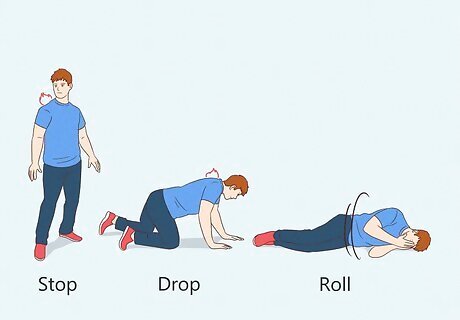
Stop, drop, and roll if you catch on fire. Don’t run if your clothes catch on fire. Instead, stop what you’re doing, drop to the ground, and roll. If you can’t safely do this, use a thick towel or blanket to extinguish the fire.


















Comments
0 comment